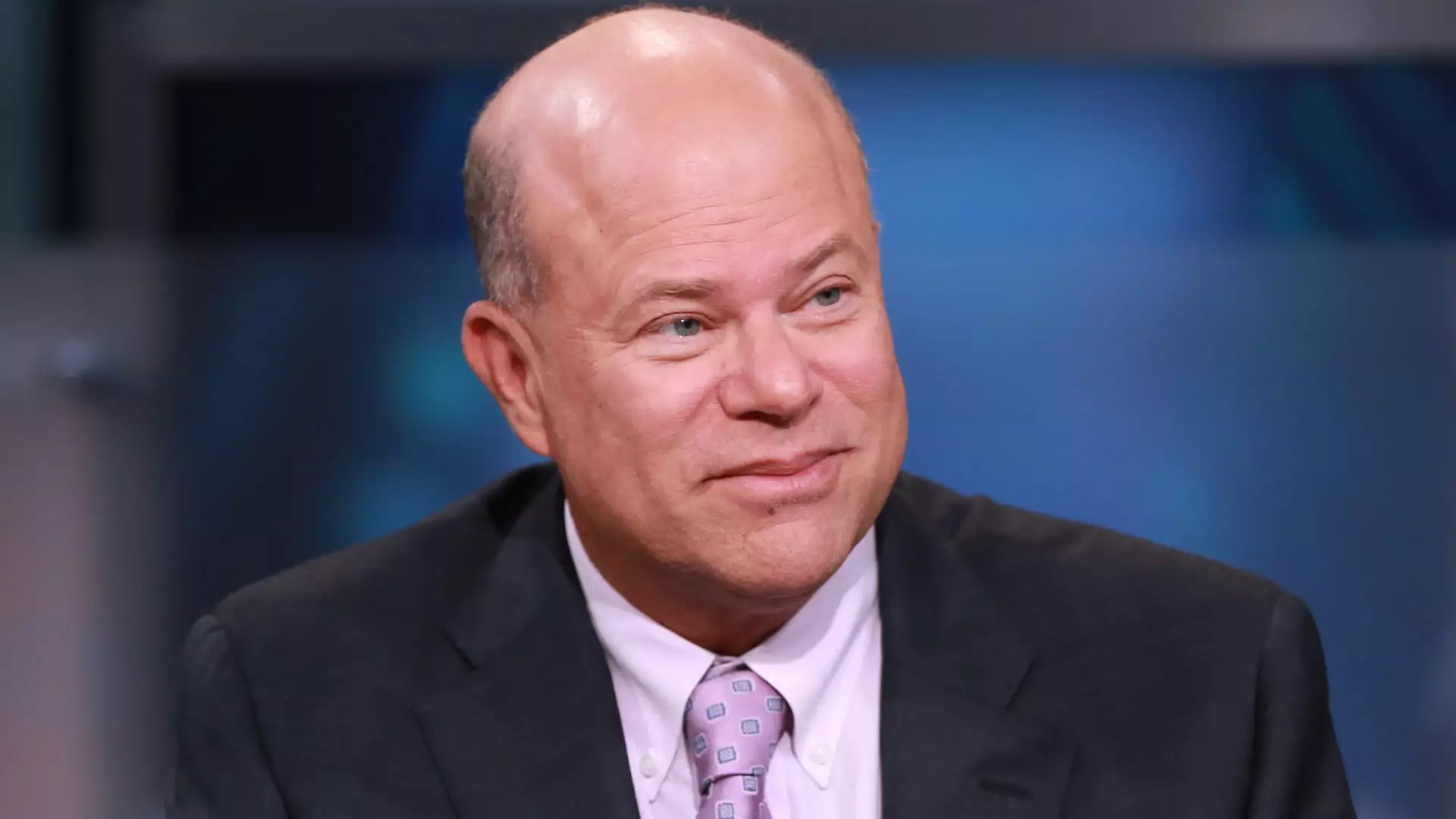In the intricate world of finance, credibility often holds as much weight as economic strategies themselves. This reality was brought to light by David Tepper, renowned hedge fund manager and owner of the Carolina Panthers, during a recent media appearance on CNBC’s “Squawk Box.” Tepper emphasized that investors should have faith in the Federal Reserve’s statements regarding interest rate adjustments, asserting that the central bank must uphold its credibility. “You just read what these guys are saying,” Tepper mentioned, underscoring the importance of interpreting Fed communications accurately. This perspective draws attention to the notion that the Federal Reserve is not merely reactive but also proactive in maintaining its integrity in the eyes of investors.
The Fed’s recent decision to reduce benchmark interest rates by half a percentage point marked the commencement of its first easing campaign in four years, reflecting a significant policy shift amidst a stable economy. This bold move demonstrates the Fed’s intention to influence economic conditions by fostering a more accommodating financial environment. Tepper delineates this action as a “recalibration,” suggesting that such adjustments are not just significant singular events but part of a broader strategy that requires sustained commitment. He speculated that further reductions could be on the horizon, hinting at the potential necessity for additional quarter-point cuts. “They have to do something besides the 50,” he stated, indicating that steady actions are necessary to preserve the Fed’s credibility.
Despite Tepper’s cautious optimism, he voiced concerns about the overarching macroeconomic conditions for U.S. stocks. The juxtaposition of the Fed easing rates while the economy remains fairly robust mirrors historical parallels, notably the late 1990s when interest rates were similarly cut during a strongly performing economy—a scenario that teetered toward economic excess. Tepper’s historical reference to the period preceding the tech bubble serves as a cautionary note. The implication is clear: excessively aggressive monetary policies, even in good times, can potentially sow the seeds for future economic instability.
Moreover, Tepper pointed out an intriguing yet paradoxical situation: while GDP figures indicate a healthy economic trajectory—an anticipated 3% growth for the third quarter, driven largely by resilient consumer spending—other indicators raise red flags. Notably, inflation continues to exceed the Fed’s 2% target, and cracks are beginning to show in the labor market. This dissonance underscores the complexities in aligning monetary policy with real economic conditions, a challenge every central bank grapples with.
Given the current landscape, Tepper acknowledged that despite his apprehensions toward U.S. stock valuations, he does not advocate betting against equities. “I don’t love the U.S. markets on a value standpoint,” he admitted, yet he emphasized the necessity of positioning oneself in the market amidst ongoing monetary easing. His conclusions reveal a fundamental investment principle: while valuations might paint a concerning picture, macroeconomic factors such as low interest rates can continue to buoy markets in the near term.
Tepper’s strategy is to embrace a cautious long position, balancing the apprehensions about inflated values against the realities of easy money policies. This reflects a broader sentiment among investors: while the underlying fundamentals may seem shaky, the immediate effects of the Fed’s easier monetary approach warrant a more conciliatory investment stance.
Interestingly, Tepper also shared an inclination towards international markets, specifically highlighting a shift in focus to Asian and European equities. This pivot can be attributed to a burgeoning set of supportive measures introduced to stabilize China’s economy. As Tepper delineated his strategy to capitalize on the global economic landscape, he suggested that opportunities may lie beyond U.S. borders, particularly in regions that are actively pursuing growth-supportive policies amidst their economic challenges.
In his narrative, Tepper not only provided insights into the intricate dynamics of the U.S. economy and the Federal Reserve’s policies but also painted a holistic picture of his investment philosophy in a world influenced by global interconnectedness. This multilayered approach emphasizes that while domestic markets may face turbulence, the search for viable investment opportunities continues on a broader, more international scale.

